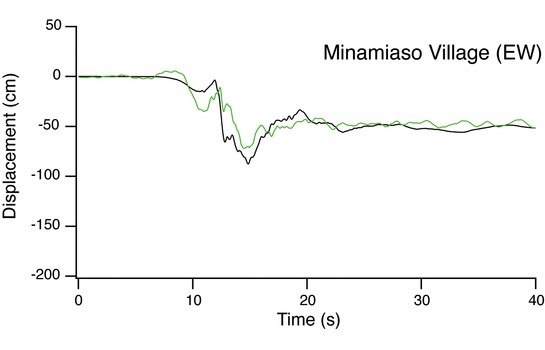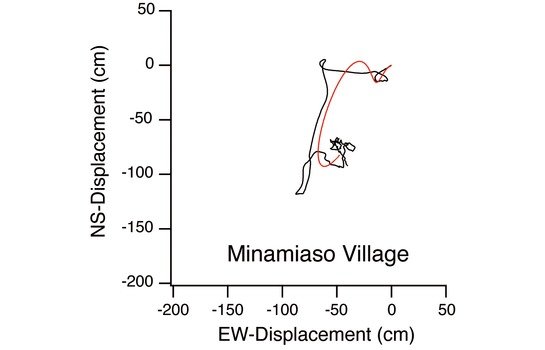Major Research 1A Research on Mitigation of and Restoration from Earthquake Disasters
Background and Objectives
In the event of large-scale disasters including Nankai megathrust earthquakes and earthquakes in the greater Tokyo area, it is required to secure necessary trunk line cargo transportation soon after an earthquake and to quickly secure the requisite minimum transportation of key emergency supplies for recovery and reconstruction. In addition, the interaction of earthquakes, tsunamis, and high waves with the ground might cause coastal disasters, so it is necessary to reduce such risks. Therefore, this research aims to develop reliable techniques for predicting seismic motions and damage to structures caused by the strongest, long-duration earthquakes. The research also intends to develop new techniques for reinforcing existing structures for improving their anti-seismic capacity, assessing damage during on-site damage surveys, and implementing emergency measures. In addition, the research attempts to elucidate the phenomenon of tsunami caused by submarine landslides, explain soil performance under the effects of tsunami, high waves, and flows, and identify related countermeasures.
Research Topics
Research and development comprise the following subthemes for mitigating earthquake damage and facilitating post-disaster recovery:
- Research on strong ground motions and damage predictions in the case of the greatest earthquakes
We will develop a composite source model for simulating near-source strong ground motions that can consider not only the strong ground motions that are caused by the rupture of deep asperities, which have conventionally been reflected in structural designs, but also the effects of shallow slip as observed during the Kumamoto earthquake, and will examine its validity.
- Research on damage-reduction techniques against the greatest earthquakes
We will develop techniques that will swiftly activate the functions of coastal facilities following earthquakes that involve adding new components to existing facilities and replacing those when damaged by earthquakes.
- Research on the interaction of earthquakes, tsunamis, and high waves with ground dynamics
We will develop effective design and countermeasure techniques for mitigating washout, cavity formation, etc. that occur to coastal structures under various dynamic external forces.
Activities in FY 2020
Research on strong ground motions and damage predictions in the case of the greatest earthquakes
In order to predict seismic motions and damage in the greatest earthquakes, we observed strong ground motions in ports and airports and organized and analyzed their data, investigated earthquake disasters and their causal factors, and worked on the development of novel methods for predicting near-source strong ground motions and liquefaction-induced ground subsidence and flow. In particular, to develop a method for predicting near-source strong ground motions, we conducted fundamental research on fault plane discretization and use of complex frequency to calculate the effects of shallow slip with improved accuracy in order to develop a composite source model that can consider not only the strong ground motions that are caused by the rupture of deep asperities, which have conventionally been reflected in structural designs, but also the effects of shallow slip. We also developed a compos-ite source model applicable to actual earthquakes and verified its validity by comparing the simulated ground motions with the observed ones.
Research on damage-reduction techniques against the graestest earthquakes
We worked on the development of a technique for assessing the seismic performance of offshore wind turbines and coastal structures, and examined techniques that could be implemented to swiftly activate the seismic performance of coastal facilities in the greatest earthquakes. In particular, we used the earthquake response analysis program that was previously developed for use on offshore wind turbines to perform a number of analyses on monopile foundations, and examined the effect of simultaneous action of seismic motions and wind, the effect of the liquefied layer modeling method, and the effect of seabed sloping. Furthermore, we conducted shake table tests and analyses on a seismic reinforcement method that could be applied to vertical-pile wharves that would involve installing additional structural members, and confirmed that the method could reduce the amount of damage and deformation for the overall wharf structures by allowing damage to the additional structural members.
Research on the interaction of earthquakes, tsunamis, and high waves with ground dynamics
Concerning the interaction of earthquakes, tsunamis, and high waves with ground dynamics, we worked on the development of a stability analysis for washout, cavity formation, etc. affecting coastal structures, and examined possible countermeasures. We also worked on techniques for evaluating the deformation and failure of coastal geotechnical structures under wave and flow forces and investigated possible measures for reinforcement.


Simulated ground motions with the composite source model for the Kumamoto earthquake
Black indicates observed ground motions while green and red indicate simulated ground motions



